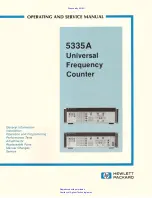
Doc. No.: 994-2030 v. 1.0 · Issue date: 04-Apr-2020
Page 2 of 3
ChemoMetec A/S · Gydevang 43 · 3450 Allerod · Denmark · support@chemometec.com · www.chemometec.com
As both measures of variation are relative to the square root of the number of cells counted (n), the
relationship between the measures of variation from a ‘true’ count is not linear. In other words, the greater
the number of cells counted, the smaller the SD and CV. The following table gives examples of expected SD
and CV values at different cell counts and the graph explains the correlation between cell count and
expected SD.
Total standard deviation
The total standard deviation (SD) includes the contribution from Poisson along with several other sources
of variation:
SD
total
= √(SD
Poisson
2
+ SD
counting device
2
+ SD
handling
2
+ SD
…
2
)
Between these different sources of variation, the Poisson will be the greatest contributor. The SD
counting device
is very low due to the use of Via2-Cassette™ with the NucleoCounter® NC-202™. Every Via2-Cassette™ is
individually volume-calibrated at our factory and the volume SD is 0.6%.
SD
handling
measures the deviation from sample handling. This varies from lab to lab depending on the skill of
the operator, but poor sample handling leads to large variations in both manual and automatic cell
counting.
Other contributors (SD
other
) also add to the total variation, and it is therefore important to know these
contributors when wanting to decrease sources of error and optimize cell counting reliability. One
contributor could be the precision of the pipetting volume, which is dependent on how well the pipettes
have been calibrated.
Manual cell counting
Manual cell counting using a hemocytometer and trypan blue staining has been the universal standard for
determining cell concentration and viability for decades. Using this method gives considerably higher SDs
and CVs of cell counts compared to those when using the NucleoCounter® NC-202™
1
. Typically, fewer cells
are counted in manual counting
2
and therefore the contribution from the Poisson distribution to the total
variation will be greater. As such, the reproducibility of the hemocytometer is highly user-dependent,
whereas the Via2-Cassette™ provides an option of sample processing and staining independent of the
operator. The hemocytometer requires the operator to be familiar with its correct use in order to avoid
often large variations.
1
See 994-2029 Tech Note NucleoCounter® NC-202™ Performance for full data (available online at
www.chemometec.com/NC-202)
2
Generally, it is recommended that you count at least 100 cells for hemocytometers, but users tend to count only
100-200 cells. This results in a Poisson contribution to the CV of 7-10% in addition to the other sources of variation.
E.g. if 150 cells are counted in 5 big squares of a hemocytometer using trypan blue 1:1, the cell concentration will be
(150 cells / 0.5 µl)
×
2 = 6
×
10
5
cells/ml with
an SD of
4.9
×
10
4
cells/ml (CV 8.1%). Analyzing the same sample on the
NucleoCounter® NC-202™ will result in counting 812 cells with an SD of
2.1
×
10
4
cells/ml (CV 3.5%). These calculations
only take the contribution from Poisson distribution into consideration.
Page 12 of 127
Summary of Contents for NucleoCounter NC-202
Page 1: ...997 0005 NucleoCounter NC 202 Document Compilation V 1 0 Page 1 of 127...
Page 14: ...Page 14 of 127...
Page 15: ...Page 15 of 127...
Page 16: ...Page 16 of 127...













































